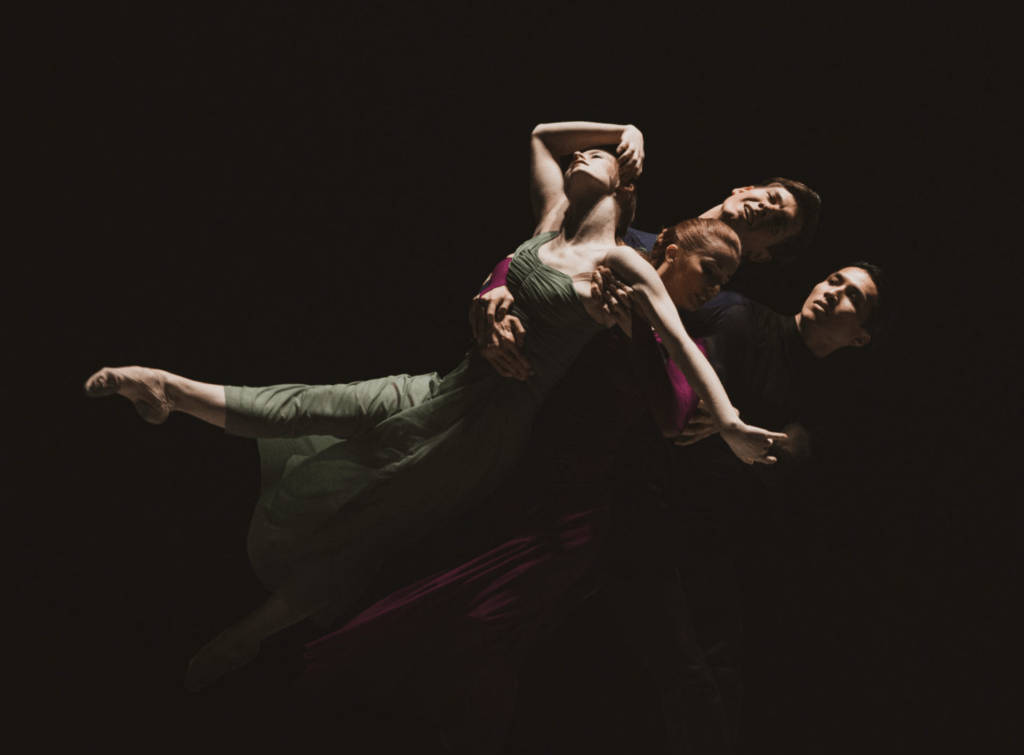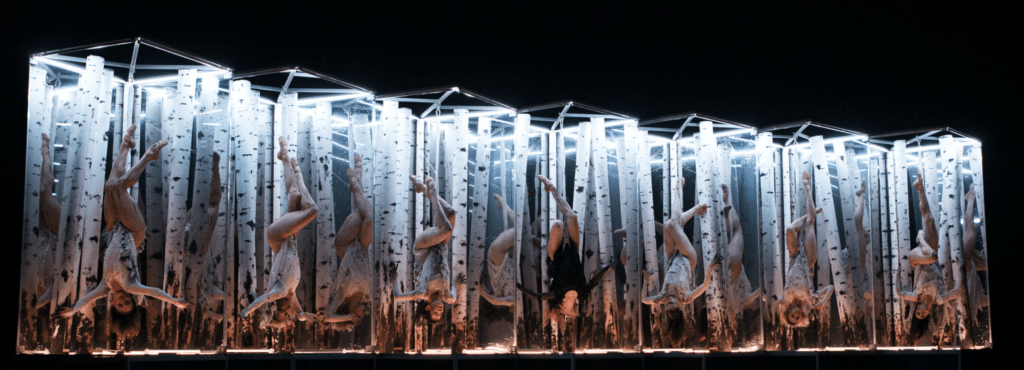
Several contemporary choreographers have taken on the quest of staging one of the most well-known elements of the classical ballet canon, including Akram Khan and Dada Masilo. With GisL László Velekei joins those who have taken on the mantle of reproducing Giselle.
Velkei’s choreography premiered in online format under the aegis of the Bartók International Art Weeks during spring 2021 and now we have the chance to see the piece live. Velkei said his intention was to bring a theatre, dance and concert experience to the stage, all at the same time. From the audience’s point of view there was no digital technology that could give the full experience of this creation. The piece is condensed to its maximum: in a single act Giselle’s traditional storyline seems to mold into a claustrophobic, almost suffocating version of itself. This ultimately emphasizes the effect of Giselle’s madness scene and persists until the very end. The essential lightness of the original piece is exchanged for something rawer, primarily embodied by the Wilies. In the transcendental world, they are the ghosts of women who died before their wedding. In GisL they are still dressed in white but are covered in mud from head-to-toe. The forest is composed of boxes with the Wilies hanging upside down before they dance Count Albrecht to death.

The choreography includes floorwork, pas de deuxs and even more partnering with cambrés – a bend backwards- as a returning element. Just like the original piece, this contemporary version requires strong acting skills from the dancers. The principal roles danced by Herkovics Eszter Adria and Daichi Uematsu do not fail to impress. However, the use of voice is a risky area to enter, as dancers are not all accustomed to it. GisL’s certain floorwork parts that are based on sharp movements hardly leave any room for the use of voice, especially if it already appears external to the scene.
GisL makes our job a little easier: we no longer have to deal with our doubts about its authenticity, however we cannot by-pass questioning our own perception of the creation. Therefore, I suggest we give ourselves the chance to fully experience the piece in the first place with the dancers’ breath and sweat while live performances are possible.




